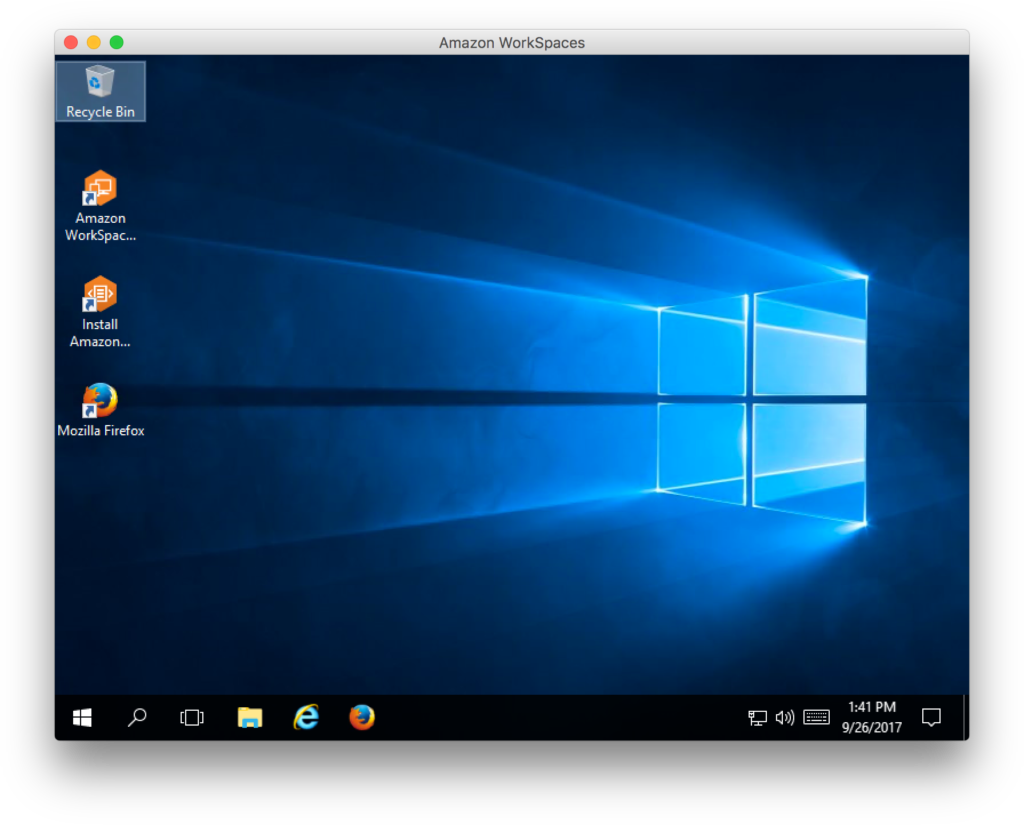
- AWS WORKSPACES VS APPSTREAM FULL
- AWS WORKSPACES VS APPSTREAM WINDOWS 10
- AWS WORKSPACES VS APPSTREAM SOFTWARE
- AWS WORKSPACES VS APPSTREAM WINDOWS
AWS WORKSPACES VS APPSTREAM FULL
VDA licenses are required for access to full virtual desktops. Pricing structure and hidden costsĬALs are required for server-based delivery of apps.
AWS WORKSPACES VS APPSTREAM SOFTWARE
License agreements that stipulate that a given piece of software must be run on-site would not be adhered to if delivered via a desktop or virtual machine from a cloud-based solution. Where cloud-based hosting falls short, and one of the key reasons to opt for on-premise hosting, is in tricky license agreements. This is a benefit and means that the need for on-site server maintenance is removed and any staff dedicated to VDI delivery do not need the same level of specialist knowledge that would be necessary with on-premise hosting. on-premise hostingĬloud-based hosting is often seen as more of a PaaS solution for VDI as there is zero server infrastructure or hardware required. This is due to the unfortunate fact that not all academic software is compatible with a Server OS. When applied to software delivery in higher education, Server OS-based VDI often requires additional delivery technologies, such as application virtualization, to be able to deploy 100% of software titles. Desktop flavors are directed towards the end-user for content creation and consumption.

Server OS is geared towards running complex backend software that companies can build their business on.
AWS WORKSPACES VS APPSTREAM WINDOWS
If Server OS is the heavy-duty workhorse vehicle in the Windows family, the desktop version is the day-to-day run-around.

AWS WORKSPACES VS APPSTREAM WINDOWS 10
Windows Virtual Desktop is the only solution that allows multi-session Windows 10 or Windows 7 access. Multi-session VDI allows concurrent sessions and is an effective method of making VDI solutions more affordable and scalable. Multi-sessionįor multi-session VDI to be possible, non-persistent VDI must be used. In enterprise and commercial, persistent VDI is often viewed as preferable, however, given the sheer number of apps to delivery and students to deliver to in higher education, non-persistent VDI often makes the most sense. VDI must be non-persistent for it to be multi-session. Non-persistent VDI is the opposite, with desktops being destroyed between sessions and spun up again for every launch. Persistent VDI requires a one-to-one ratio of virtual machines to users, which often means a one-to-one ratio of various required licenses is necessary. When a user returns to a desktop in subsequent sessions, it will be the same desktop exactly as it was previously left, from files to preferences to installed apps. Persistent VDI means that desktops are retained between sessions.

Cost considerations and resource requirements for each route to deploying VDI.The benefits and limitations of each solution, and situations in which one solution may excel over the other.The difference between Windows Virtual Desktop, Amazon AppStream 2.0 and more traditional VDI solutions.non-persistent and Server OS vs Desktop OS The facets to consider in any VDI solution, such as persistent vs.This article will take an in-depth look at both Microsoft and Amazon's hosted/cloud desktop virtualization solutions and will cover the following: VDI has now had a reasonable amount of time to mature and be refined in the era of 'as-a-service' business models, we're seeing more major players in IT offer their own hosted solutions.

This is was due, in part, to the complexity of the technology and the many layers of licenses and hardware required. In its early stages, there were high hopes for VDI, with IT departments seeing its vast potential and power, however, it was extremely difficult to make affordable to the point of being scalable. VDI is a powerful technology that was organically developed by organizations using server virtualization. Examples of this may be cross-platform delivery, circumventing tricky license agreements, or delivering to thinner end-clients. For various reasons, when it comes to deploying software in Higher Education, many of the most challenging delivery contexts may require VDI.


 0 kommentar(er)
0 kommentar(er)
